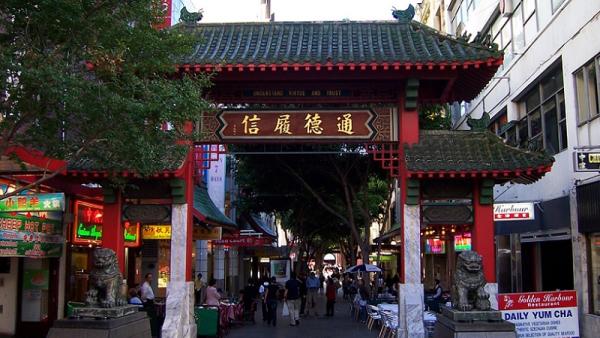No nostalgia for Mao in the Australian-Chinese community

Bob Carr, Director, Australia-China Relations Institute, University of Technology Sydney |
No sweeter duty for a Premier. A convention centre packed with families, their youngsters being praised as the highest achievers in the end-of-school exams. A happy annual ritual.
Looking back, one thing stands out about the annual awards for young scholars: the steady rise, in my years, in the number of students with Chinese names (and those with Indian and Vietnamese names).
According to the latest ABS data there are 481,800 Australians born in China, plus their sons and daughters. China has been our biggest source of migrants almost every year since 2010-11.
I doubt if in the history of migration any group has moved faster to integrate, to get naturalised and produce sons and daughters comfortable in their Australian identities.
This community should be immediately absolved of any nostalgic hankering for Maoist China.
The concerts that had been planned this month to commemorate Mao – ill-advised and profoundly silly – had been organised by people on the margin of this community. The organisers are a minority close to telephone box dimensions who feel underappreciated and are seeking relevance.
I had placed a bet that no concert will be attended by Chinese diplomats from the embassy or the consulates. Nor by serious community leaders. Nor would they have been sponsored or promoted by large Chinese media organisations like Xinhua or Phoenix TV.
Rowan Callick, the China correspondent for The Australian, asked in respect of these Mao gatherings, “What’s happening within Australia’s Chinese community?” He gave the impression these rallies had deep support. They don’t. In a pattern as old as politics itself a small minority is waving a flag to attract attention.
There would have been another way of commemorating the anniversary of Mao’s death. Here’s my own modest proposal. I’d suggest that the organisers take up the 50th anniversary of the launch of the Cultural Revolution in 1966, and invite Australian-Chinese who suffered its torments to gather and share their stories.
Its horrors have been traversed by Hong Kong-based scholar Frank Dikötter in his book The Cultural Revolution: A People’s History, 1962-1976, published this year. His account probably explains why Chinese have difficulty in coming to terms with it: Mao unleashed the people of China against one another. In this sense it parallels the French difficulties with the German occupation and the Spanish with their Civil War.
The Cultural Revolution was a response to criticism of Mao’s leadership within the Communist Party; in particular, of Mao’s Great Leap Forward between 1958-61 that caused a famine that left 30 million or more dead, the worst famine in history. Mao’s critics, including President Liu Shaoqi, took him on and forced a reversal, relaxing collectivist policies to allow the country to recover. In 1966 Mao reasserted control, and unleashed student Red Guards to beat and torture and drive into suicide his opponents. The violence pitched faction against faction and drew in the army.
My advice to local Mao-celebrants: collect the voices of those Australian-Chinese who saw this first-hand. Thus make it clear that the Chinese community in Australia is not tainted by totalitarian nostalgia. A gathering of Mao’s victims would honour the endurance of the Chinese people, perhaps their greatest quality.
While the embalmed Mao lies on grandiose display in Beijing, the official position on Mao, laid down in 1981, is that the Cultural Revolution and the Great Leap Forward were historic errors. Given the scale of these events in post-1949 history, that comes close to an implicit repudiation of Mao’s time in power.
Communist China itself does not memorialise his death, a powerful statement from a still-closed political system. A re-opening of the Maoist cult was one of the errors that brought the downfall of Bo Xilai, Party Secretary of Chongqing, now imprisoned. Of the seven members of the Standing Committee of the Politburo a majority carry scars from the Cultural Revolution. One had his father forced to suicide by leaping from a building.
On the other hand, Mao remains the founder of the state – virtually the sole founder given his cult was launched four years before the Communists took power. Perhaps a thorough reappraisal is only feasible when China completes its economic transition and feels its way to political pluralism, following the trajectory of Taiwan and South Korea.
Years off. But returning to the cult of Mao only retards it.
Meanwhile, there is a victim of Mao whose portrait should be decked with flowers, taking the place of Mao in the concerts proposed this month. His name is Liu Shaoqi. As China’s President in the early 60s he is photographed looking aghast at empty bowls held by starving peasants. He took on Mao, forced a reversal of the Great Leap and put in place moderate reforms to steer the country to recovery.
In the first phase of the Cultural Revolution, he and his wife Wang Guangmei sat in their official residence while Mao’s mob brayed outside. The couple was waiting for the moment when they would be hauled off to be tortured. “It’s a little like our wedding day,” Liu said to his wife, “Sitting here, waiting for the sedan chair.” Liu Shaoqi was killed in jail, his widow survived.
If he had taken power from Mao, China would have embarked on opening up and reform nearly 30 years before Deng Xiaoping’s Southern Tour of 1992.
Another idea for our local Maoists: hoist a photo of Deng Xiaoping up there with his mentor Liu Shaoqi. What Deng unleashed in China was, of all the world’s 20th century revolutions, the only one that worked.
Author
Professor the Hon. Bob Carr is Director of the Australia-China Relations Institute at the University of Technology Sydney.

